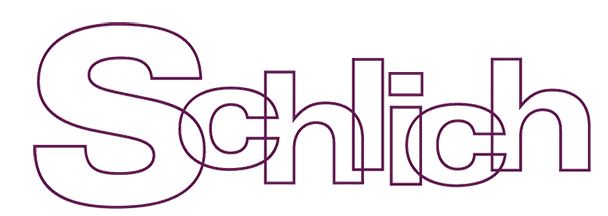EUIPO Board of Appeal Decision R 1839/2023-5
In a recent judgement, the Board of Appeal of the European Union Intellectual Property Office (EUIPO) dealt with a trade mark dispute between well-known cosmetics manufacturer L’Oréal and Chinese rival Guangzhou Ya Ti Ao Jia Cosmetics Co., Ltd ‘Guangzhou’ regarding L’Oréal’s figurative rose mark associated with the Lancôme brand.
Background with respect to first instance proceedings
On 21 April 2022, Guangzhou Ya Ti Ao Jia Cosmetics Co., Ltd ‘Guangzhou’ applied to register the figurative mark

for various cosmetics in class 3.
In May 2022, L’Oréal filed an opposition against the registration based on four earlier marks:
| EUTM registration No. 2494557 registered for various goods in class 3. | EUTM registration No. 17972324 registered for various goods in class 3. | EUTM registration No. 17972718 registered for various goods in class 3. | EUTM registration No. 16872971 registered for mark-up preparations and cosmetics in class 3. |
 |
 |
 |
 |
The grounds of opposition were those laid down in Article 8(1)(b) EUTMR, namely likelihood of confusion, and Article 8(5) EUTMR, based on the alleged reputation of the above four marks in the EU and the detriment with respect thereto.
In August 2023, the Opposition Division rejected the opposition on the ground that (1) there was no likelihood of confusion and (2) there was no risk of detriment to the reputation of a mark, that is to the extent reputation existed.
By way of reasoning, and with a focus on EUTM registration No.’s 2494557 and 17972324 which were believed to be most similar to the opposed mark, the Opposition opined that:
- Rose blossom scent is a common scent in essential oils and cosmetics and thus in the context of the relevant goods, the public would perceive the signs’ common element as allusive of the smell/colour/one of the components of the goods and thus the rose has weak distinctive character.
- Lancôme of EUTM registration No. 17972324 is meaningless and thus distinctive. Rose Jelly Mask by contrast is descriptive and thus non-distinctive.
- The word ‘ARTÍSCARE’ would be broken down into elements with ‘ART’ or ‘ARTIS’ being associated with something artistic, and ‘CARE’ being associated with caring for somebody or something. Accordingly, the element is weak since it refers to the desired effects or type of goods.
- ‘ARTÍSCARE’ is the dominant element of the contested mark.
- Visually, the figurative element of the L’Oréal earlier marks and the Guangzhou opposed mark are different. For example, there are a different number of petals, the orientation of the rose is different, and the figurative element differs in its significance in the overall respective marks. Furthermore, the marks differ in their verbal element and therefore the signs are visually similar only to a low degree.
- Aurally, the earlier L’Oréal marks and the opposed Guangzhou mark were held to be dissimilar. EUTM registration No. 2494557 is of course purely figurative and therefore doesn’t need an aural assessment and EUTM registration No. 17972324 and the contested mark were found to differ in all their verbal elements.
- Conceptually, the earlier L’Oréal marks and the opposed Guangzhou mark were held to be similar to, at most, a very low degree on account of (1) the difference in concept conveyed on the one hand between the rose of EUTM registration No. 2494557 and on the other the combination of the dominant ‘ARTÍSCARE’ with the rose and (2) the combination of Lancôme, Rose Jelly Mask and the rose on the one hand and the combination of the dominant ‘ARTÍSCARE’ with the rose on the other.
With respect to whether L’Oréal’s earlier marks enjoy a reputation in the EU sufficient to reject Guangzhou’s mark, the Opposition Division opined firstly that the evidence submitted by L’Oréal mainly refers to ‘Lancôme’ or to figurative marks comprising the same rather than the rose of EUTM registration No. 2494557. Accordingly, EUTM registration No. 2494557 was found not to have acquired a higher degree of distinctiveness.
The Opposition Division’s position with respect to EUTM registration No. 17972324 was more favourable to L’Oréal, and the Opposition Division acknowledged, based on evidence of awards, the fact that it was always ranked as one of the most valuable trade marks and had well know celebrity ambassadors, that the mark had acquired a high degree of distinctiveness.
However, unfortunately for L’Oréal the Opposition Division found that the enhanced scope of protection enjoyed by EUTM registration No. 17972324 was nevertheless unlikely to sway consumers from noting the clear visual, aural and conceptual differences between that mark and Guangzhou’s opposed mark.
Accordingly, no likelihood of confusion was found and no risk of detriment to the reputation of L’Oréal’s earlier marks.
Although L’Oréal’s EUTM registration No.s 17972718 and 16872971 were not considered in nearly as much detail as EUTM registration No. 2494557 and 17972324, the Opposition Division did note that the situation with respect to the former would be very similar to that with respect to 17972324 and the situation with the latter would be closer to that with respect to EUTM registration No. 2494557 owing to the additional differences between the registered and opposed mark.
Second instance proceedings
On 29 August 2023, L’Oréal appealed the above first instance decision mainly contesting:
- the characterisation of the figurative rose element as weak,
- the characterisation of ‘ARTÍSCARE’ as the dominant element of the opposed mark
- the lack of appreciation for the similar structures of the earlier and opposed marks (distinctive element with a non-distinctive element underneath),
- the focus on the differences between the roses of the L’Oréal and Guangzhou mark,
- the lack of acknowledgement of evidence showing use of EUTM registration No. 2494557 in isolation, and
- the lack of focus on visual perception over aural perception.
In essence, L’Oréal argued that the registered marks and the opposed mark are visually highly similar and conceptually similar, they share the same distinctive element (i.e. the rose) and the earlier marks enjoy a high degree of reputation in the EU with the result that use of the contested mark by Guangzhou would take unfair advantage of the repute of L’Oréal’s earlier marks to the detriment of the marks.
Unfortunately for L’Oréal, the Board of Appeal disagreed.
Instead, the Board of Appeal agreed with the Opposition Division that the figurative element of a rose is weak and hardly distinctive as it will be perceived as a reference to the smell, the colour or an ingredient of the relevant goods.
With respect to Guangzhou’s mark, the Board opined that the word ‘ARTÍSCARE’ has a stronger visual impact whereas in EUTM registration No. 17972324, Lancôme was found to be the most distinctive element. Similarly to the Opposition Division, the Board of Appeal noted the differences in the graphic stylisation of the rose between the earlier L’Oréal marks and the opposed mark. Thus overall, the Board of Appeal found EUTM registration No. 2494557 and the opposed mark to be visually similar to a low degree and EUTM registration No. 17972324 and the opposed mark visually similar to a very low degree.
Unsurprisingly, the Board found the earlier marks and opposed mark to be aurally different.
Conceptually, on account of the inherent distinctiveness of the coinciding element of the rose having been found to be weak, the earlier marks were found to be conceptually similar only to a low degree.
Turning to the topic of reputation, the Board noted that much of the evidence relating to ranking and awards relates to ‘Lancôme’ in isolation and not to either the rose in isolation or the combination of ‘Lancôme’ and the rose. Accordingly, whilst ‘Lancôme’ as such may enjoy a high degree of reputation in relation to cosmetics, so such reputation was to be acknowledged for either of EUTM registration No.’s 2494557 and 17972324.
Thus, overall, the Board found there to be no likelihood of confusion between L’Oréal’s earlier marks and the opposed mark of Guangzhou and no reputation to be put at risk.
For completeness, L’Oréal did try to argue in both instances that the public might believe that Guangzhou’s mark forms part of a series of L’Oréal marks, all characterised by a rose, and therefore that the public might believe that Guangzhou’s mark is a new brand line of L’Oréal. At both instances however, this argument was met with dismissal. In the second instance decision, the Board noted that the only similar element between L’Oréal’s earlier marks and Guangzhou’s mark is a rose which is weak and hardly distinctive for cosmetics and Guangzhou’s mark has the dominant verbal element ‘ARTÍSCARE’. Accordingly, the characteristics of the opposed mark were found overall to be incapable of being associated with the earlier marks of L’Oréal.









